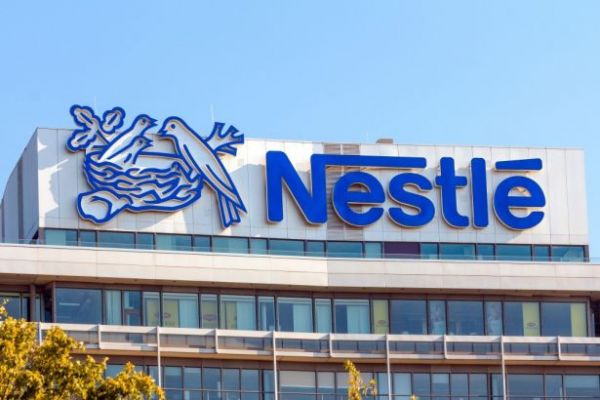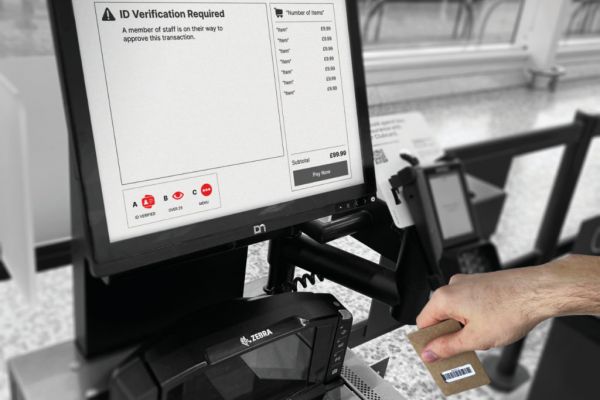A Nestlé bottling unit is opening a new plant in drought-stricken Phoenix because that's where the water is. Really.
Drought? Desert? Water? The pure dissonance provoked understandable controversy among the sand-lubbers who make up one of the top three U.S. markets in per capita water-bottle-swigging.
"It's hard for people to hold in their minds," said Sarah Porter, director of the Kyl Water Center at Arizona State University. "Those two things don't seem compatible." And yet the question remains—how can they bottle water in the desert?
The Nestlé Waters North America facility slated for western Phoenix is nearing fruition amid a series of higher-pitched battles the company has faced elsewhere. Three environmental groups have sued the U.S. Forest Service for letting Nestlé continue to bottle in the San Bernardino Mountains. Last month, Hood River County, Ore., voted in favor of an anti-bottling measure, plugging up a proposed Nestlé facility. And persistent community opposition in tiny Eldred Township, Pa., led the company to drop plans for a plant there.
Upon learning of the Phoenix plant in May, a community college student posted a petition to Change.org calling Nestlé Waters "irresponsible and unsustainable" given that the Grand Canyon State has officially been in a drought since 1999. A Facebook page followed suit. In response to those concerns, the city water services department quickly called a public meeting. Held earlier this month at a verdant Audubon Society nature center south of downtown, the event pitted a passionate and knowledgeable city water wonk against a crowd of about 50 people ranging in temperament from screechy idealist to respectful skeptic. Tempers flared, with ample interruptions, but the picture presented was counterintuitive: a desert city with water to spare.
Phoenix produced about 95 billion gallons of water in 2015. It gets more than half from Arizona's Salt and Verde rivers, and a little less than that from a Colorado River diversion, some of which is piped into storage aquifers for emergency use. About 2 percent is groundwater. The Nestlé plant would use about 35 million gallons (or 264 million half-liter bottles) when it opens in the spring, or about 0.037 percent of the volume that comes out of the city's plants and wells. So with that kind of math, and all the demand for bottled water among thirsty Phoenicians, it looks like there's plenty to go around—even enough for Nestlé to pour out of the tap, bottle, and sell for a few bucks. The Arizona environmental community isn't so sure.
Plastic bottles and black swans
In America, single-serving bottles of water recorded 40 straight quarters of 20 percent growth or more starting in 1995, a decade long run during which the product went from novelty to mainstay, visible in almost every conceivable setting. Though its overall growth has dropped since then, Michael Bellas of Beverage Marketing Corp. said this year may mark a more telling milestone: Water sales are expected to surpass soda sales for the first time.
Bottled water tends to draw opposition for at least two reasons. One is the removal of water from local ecosystems or reservoirs. Another is the plastic: Bottles too often find their way to unintended repositories like the great Pacific garbage patch. Nestlé Waters has promoted "closed-loop" recycling, which would keep the same polyethylene terephthalate (PET) plastic in distribution and out of landfills. "It is regarded as a symbol," said Nelson Switzer, chief sustainability officer of Nestlé Waters, of plastic bottles. "And so how do you manage when you are a symbol?"
Beyond the bottles and pledges of recycling, Phoenix's environmental advocates say they're frustrated with a local economy that has long been dominated by real estate development. They contend that, in Phoenix, it's considered heresy to even question development, and that in the case of the Nestlé Waters plant, economic growth has triumphed over common sense.
"People don't trust the city and they have reason not to," said Steve Brittle, president of Don't Waste Arizona. "This Nestlé thing has reawakened discussion."
At a City Council policy briefing on June 21, the Nestlé plant didn't come up. During a periodic state-of-the-water presentation, Phoenix Water Services Director Kathryn Sorensen, who holds a Ph.D. in resource economics from Texas A&M University, did, however, describe the city's lifelong obsession with water, the structures built to protect it, and the risks ahead. She said that managing Phoenix's water for future dry spells isn't enough. The city of more than 1.5 million people needs to invest in the infrastructure that moves water where it's needed, particularly in emergencies.
A 1980 law made Arizona the first state to tie real estate development to water availability. Consequently, Phoenix has spent the last generation changing the way it manages water, by using much less groundwater, securing a share of the Colorado River, and taking conservation measures, like discouraging Northeastern suburb-style lawns in the Sonoran Desert. As a result, the city uses about the same amount of water as 25 years ago, when its population counted 400,000 fewer people.
Everybody wants to avoid a scenario in which high-end demand projections intersect with low-end supply projections: a black swan crisis. To drive the point home, Sorensen adds an animated black swan to her chart of water supply and demand projections.
It's easy to see how things might go wrong, because they may already be starting to. Lake Mead, the repository for Colorado River water that sits between Nevada and Arizona behind the Hoover Dam, is seeing dangerously low levels, with a better than 50 percent chance that emergency measures will kick in within two years. Phoenix could absorb the 320,000 acre-foot "tier 1" cut with limited hits to water-banking and agriculture, according to the city water department. (An acre-foot sounds like what it is, an acre of water 1 foot deep.) Further cuts await if levels continue to drop. In a worst-case scenario, the city believes that it has the groundwater equivalent of about 35 years of its Colorado River supply.
“Once we enter into shortage, it’s really important to note that shortage will probably become the new normal," Sorensen told the city leaders. "Once we go into shortage conditions, it’s relatively difficult to get back out. The good news, though, for us is really there’s no impact to us on our water supplies at least for quite some time to come. And even then, we have resiliency in supplies that we can fall back on."
Why Phoenix?
Into this oasis walked Nestlé Waters. Phoenix initially caught the company's attention for single-serve bottling about 10 years ago, according to Rita Maguire, a former Arizona water department chief, who now counsels the company on state and local water law. Then the housing crash hit Phoenix particularly hard and Nestlé moved on to other projects elsewhere.
With the city's economy now in recovery, the company's internal real estate unit started looking for a site in mid-2015, and leased a 395,000-square-foot facility in the western part of town in March. The company says that with a plant in Phoenix, it can cut down on the transportation costs of moving water into the region. Nestlé Waters North America has 29 water facilities in the U.S. and Canada. Estimates suggest the plant will create 40-50 jobs.
Nestlé's Switzer explained some of the main factors driving his company's site selection: water quantity, water quality, regulatory burdens, local concerns, and Nestlé's corporate perspective.
"We want to be where people want us," Switzer said. Gauging a community's welcome (or lack thereof) is a part of the process. "If all of those things together make sense, then we can site." The company said water scarcity is a real concern, and "in areas where population growth is threatening to exceed available water supplies, the concern is heightened.”
Despite the drought, environmentalist outrage, and the popular vision of Phoenix as a massive, baking asphalt grid, the city made a point of promoting the sustainability of the Nestlé plant.
For its part, Nestlé said it's bottled water in Phoenix for its home and office delivery service since 1987. Pepsi Bottling Co., Niagara Bottling, and DS Services of America also call Phoenix home, along with other smaller facilities. They use water on a scale similar to the Nestlé plant, according to the city's water services department. The Nestlé Waters plant may expand in later years.
Nevertheless, the sheer optics of a water-bottling facility in Phoenix touched off a local debate about how America's sixth-biggest city will be able to continue quenching its thirst. Sorensen, the water services director, noted that people have been living in desert cities longer than in temperate cities. But she conceded that the future is, well, cloudy.
"We know climate change will have an impact on us," she told the mayor and other council members. "We don’t know how or to what extent, but we know it won’t be good."
News by Bloomberg, edited by ESM. To subscribe to ESM: The European Supermarket Magazine, click here.














